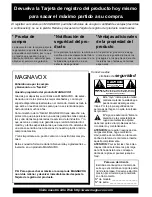
Testing User-Defined Functions
CFC Logic
The device has a vast capability for allowing functions to be defined by the user, especially with the CFC logic.
Any special function or logic added to the device must be checked.
Of course, general test procedures cannot be given. Configuration of these functions and the target conditions
must be actually known beforehand and tested. Possible interlocking conditions of switching devices (circuit
breakers, disconnectors, ground switch) are of particular importance. They must be observed and tested.
Current, Voltage, and Phase Rotation Testing
≥ 10 % of Load Current
The connections of the current and voltage transformers are tested using primary quantities. Secondary load
current of at least 10 % of the nominal current of the device is necessary. The line is energized and will remain
in this state during the measurements.
With proper connections of the measuring circuits, none of the measured-values supervision elements in the
device should pick up. If an element detects a problem, the causes which provoked it may be viewed in the
Event Log. If current or voltage summation errors occur, then check the matching factors.
Messages from the symmetry monitoring could occur because there actually are asymmetrical conditions in
the network. If these asymmetrical conditions are normal service conditions, the corresponding monitoring
functions should be made less sensitive.
Current and Voltage Values
Currents and voltages can be seen in the display field on the front of the device or the operator interface via a
PC. They can be compared to the quantities measured by an independent source, as primary and secondary
quantities.
If the measured values are not plausible, the connection must be checked and corrected after the line has
been isolated and the current transformer circuits have been short-circuited. The measurements must then be
repeated.
Phase Rotation
The phase rotation must correspond to the configured phase rotation, in general a clockwise phase rotation. If
the system has an anti-clockwise phase rotation, this must have been considered when the power system data
was set (address 209
PHASE SEQ.
). If the phase rotation is incorrect, the alarm
Fail Ph. Seq.
(FNo 171)
is generated. The measured value phase allocation must be checked and corrected, if required, after the line
has been isolated and current transformers have been short-circuited. The measurement must then be
repeated.
Voltage Transformer Miniature Circuit Breaker (VT mcb)
The VT mcb of the feeder (if used) must be opened. The measured voltages in the operational measured
values appear with a value close to zero (small measured voltages are of no consequence).
Check in the spontaneous annunciations that the VT mcb trip was entered (annunciation
>FAIL:FEEDER VT
“ON” in the spontaneous annunciations). Beforehand it has to be assured that the position of the VT mcb is
connected to the device via a binary input.
Close the VT mcb again: The above messages appear under the spontaneous messages as “OFF”, i.e.
>FAIL:FEEDER VT
“OFF”.
If one of the events does not appear, the connection and allocation of these signals must be checked.
If the
ON
-state and
OFF
–state are swapped, the contact type (H–active or L–active) must be checked and
remedied.
3.3.5
3.3.6
Mounting and Commissioning
3.3 Commissioning
424
SIPROTEC 4, 7SJ62/64, Manual
C53000-G1140-C207-8, Edition 08.2016
Summary of Contents for SIPROTEC 4
Page 8: ...8 SIPROTEC 4 7SJ62 64 Manual C53000 G1140 C207 8 Edition 08 2016 ...
Page 18: ...18 SIPROTEC 4 7SJ62 64 Manual C53000 G1140 C207 8 Edition 08 2016 ...
Page 30: ...30 SIPROTEC 4 7SJ62 64 Manual C53000 G1140 C207 8 Edition 08 2016 ...
Page 540: ...540 SIPROTEC 4 7SJ62 64 Manual C53000 G1140 C207 8 Edition 08 2016 ...
Page 594: ...594 SIPROTEC 4 7SJ62 64 Manual C53000 G1140 C207 8 Edition 08 2016 ...
Page 720: ...720 SIPROTEC 4 7SJ62 64 Manual C53000 G1140 C207 8 Edition 08 2016 ...
















































